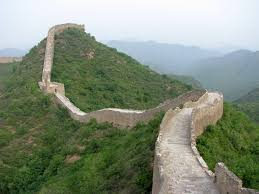The Seven Wonders of the Ancient World have fascinated humanity for centuries, offering a glimpse into the architectural brilliance of ancient civilizations. However, as time progressed, new marvels emerged that demonstrated the incredible advancements in engineering, architecture, and design achieved in more recent history. Recognizing the need to celebrate these achievements, the New7Wonders Foundation launched a global initiative in 2000 to identify the Seven Wonders of the Modern World.
The selection process was a democratic one, driven by the participation of over 100 million people worldwide. Candidates for the wonders included iconic structures and landmarks from around the globe, each representing the ingenuity, determination, and cultural significance of its creators. The final seven were chosen based on their historical importance, architectural brilliance, and the impact they have had on the world. These wonders are a testament to human capability, reflecting both technological prowess and the desire to create enduring legacies.
The following sections delve into each of the Seven Wonders of the Modern World, exploring their history, construction, significance, and the marvel they represent.
Table of Contents
#### 1. **Great Wall of China**
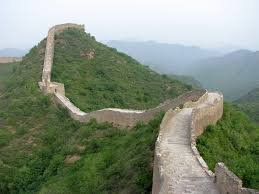
Great Wall
The Great Wall of China is an awe-inspiring structure that stretches over 13,000 miles, making it the longest wall in the world. It was constructed over several centuries, beginning in the 7th century BCE, with the primary purpose of protecting China from invasions and raids by nomadic tribes from the north, particularly the Mongols. The wall is not a single continuous structure but a series of walls and fortifications built by various Chinese dynasties, with the most famous sections constructed during the Ming Dynasty (1368–1644).
The construction of the Great Wall was an immense logistical challenge. Millions of laborers, including soldiers, peasants, and prisoners, toiled under harsh conditions to build the wall. The materials used varied depending on the region, ranging from tamped earth and wood in the early stages to bricks and stone during the Ming period. The wall’s design includes watchtowers, signal stations, and barracks, allowing it to serve as both a defensive barrier and a communication system.
#### 2. **Petra, Jordan**
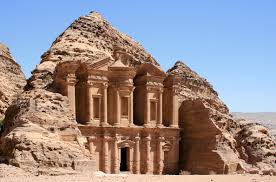
Petra
Petra, the ancient city carved into the red sandstone cliffs of southern Jordan, is a testament to the ingenuity and creativity of the Nabataean civilization. Established as early as the 4th century BCE, Petra served as the capital of the Nabataean Kingdom and a major hub for trade and commerce. The city is strategically located at the crossroads of several caravan routes, connecting the Arabian Peninsula with Egypt and the Mediterranean.
What makes Petra truly remarkable is its architecture. The Nabataeans skillfully carved temples, tombs, and other structures directly into the cliffs, using the natural landscape to create a city that is both aesthetically stunning and highly functional. The most famous of these structures is Al-Khazneh, or “The Treasury,” a massive façade that greets visitors as they emerge from the narrow Siq, a winding canyon that serves as the main entrance to the city. The Treasury’s intricate carvings and monumental scale are a testament to the craftsmanship of the Nabataeans.
Petra’s significance goes beyond its architectural beauty. The city was a melting pot of cultures, as evidenced by the diverse influences in its art and architecture, ranging from Hellenistic to Arabian. It was a thriving metropolis at the height of the Nabataean Kingdom, with a complex water management system that allowed the inhabitants to thrive in the arid desert environment. However, after a series of earthquakes and the decline of trade routes, Petra was largely abandoned and forgotten by the outside world until its rediscovery in 1812 by Swiss explorer Johann Ludwig Burckhardt.
Today, Petra is a UNESCO World Heritage Site and one of the most visited tourist destinations in the Middle East. It stands as a symbol of human perseverance and the ability to create lasting beauty in the most challenging environments. Its designation as one of the Seven Wonders of the Modern World is well-deserved, as it continues to inspire awe and wonder in all who visit.
#### 3. **Christ the Redeemer, Brazil**
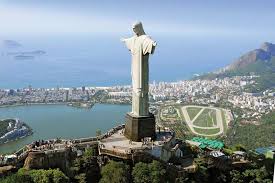
Christ the Redeemer
Standing atop the Corcovado Mountain in Rio de Janeiro, Brazil, the statue of Christ the Redeemer is one of the most recognizable landmarks in the world. This colossal statue, which measures 98 feet tall (not including its 26-foot pedestal) and spans 92 feet from fingertip to fingertip, overlooks the city of Rio de Janeiro and has become a symbol of Christianity, peace, and Brazilian culture.
The idea for the statue was first proposed in the 1850s by a Catholic priest named Pedro Maria Boss, but it wasn’t until the 1920s that the project gained momentum. A group of Brazilian Catholics, known as the “Catholic Circle of Rio,” successfully petitioned the government to fund the statue’s construction as a response to the perceived “godlessness” of Brazilian society. French sculptor Paul Landowski designed the statue, while Brazilian engineer Heitor da Silva Costa oversaw its construction. The statue was completed in 1931, after five years of work.
Christ the Redeemer is made of reinforced concrete and covered with thousands of triangular soapstone tiles, which give the statue its smooth, white appearance. The statue’s design is a blend of art deco and modernist styles, characterized by its clean lines and monumental scale. The figure of Christ is depicted with arms outstretched, symbolizing the embrace of all humanity. The location on Corcovado Mountain was chosen for its visibility, allowing the statue to be seen from almost anywhere in Rio de Janeiro.
Beyond its religious significance, Christ the Redeemer has become a cultural icon, representing the warmth, hospitality, and diversity of Brazil. It is a UNESCO World Heritage Site and attracts millions of visitors each year, who make the pilgrimage to the top of Corcovado to take in the breathtaking views of Rio de Janeiro and stand in the shadow of this majestic monument.
The statue has also become a symbol of peace and unity, often illuminated in different colors to commemorate various global events and causes. Its status as one of the Seven Wonders of the Modern World is a recognition of its cultural and spiritual impact, as well as its architectural brilliance.
#### 4. **Machu Picchu, Peru**
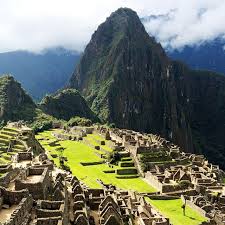
Machu Picchu
Machu Picchu, the ancient Inca city perched high in the Andes Mountains of Peru, is a marvel of engineering and a symbol of the ingenuity of the Inca civilization. Built in the 15th century during the reign of the Inca emperor Pachacuti, Machu Picchu is believed to have been a royal estate or religious site. The city was abandoned shortly after the Spanish conquest of the Inca Empire, and it remained largely unknown to the outside world until its rediscovery by American historian Hiram Bingham in 1911.
The location of Machu Picchu is nothing short of extraordinary. The city is situated on a mountain ridge 7,970 feet above sea level, surrounded by lush, green peaks and deep valleys. The Inca architects and engineers designed the city to harmonize with its natural surroundings, using the landscape’s contours to create terraces, plazas, and buildings. The construction of Machu Picchu is a testament to the Inca’s advanced knowledge of engineering and architecture. The city’s buildings were constructed using a technique called ashlar, where stones are cut and shaped to fit together without mortar. This method allowed the structures to withstand earthquakes, a common occurrence in the region.
Machu Picchu is divided into two main areas: the agricultural sector, with its terraces and irrigation channels, and the urban sector, which includes temples, palaces, and residential buildings. Among the most notable structures are the Temple of the Sun, the Intihuatana Stone, and the Room of the Three Windows, all of which reflect the Inca’s deep connection to their environment and their worship of the sun and other deities.
The significance of Machu Picchu extends beyond its architectural achievements. It is a symbol of the Inca civilization’s resilience and their ability to create a thriving society in one of the most challenging environments on earth. The city’s remote location and the surrounding natural beauty have made it a pilgrimage site for travelers and adventurers from around the world.
Machu Picchu was declared a UNESCO World Heritage Site in 1983, and it remains one of the most visited tourist destinations in South America. Its inclusion as one of the Seven Wonders of the Modern World is a recognition of its historical and cultural significance, as well as its enduring mystery and allure.
#### 5. **Chichen Itza, Mexico**

Chichen Itza
Chichen Itza, located in the Yucatan Peninsula of Mexico, is one of the most important archaeological sites of the Maya civilization. Founded around the 6th century CE, Chichen Itza became a major political, economic, and religious center, reaching its peak between the 9th and 12th centuries. The site is renowned for its well-preserved ruins, which include temples, pyramids, and other structures that showcase the advanced knowledge and artistic prowess of the Maya people.
The most iconic structure at Chichen Itza is the Temple of Kukulcán, also known as El Castillo. This step pyramid, which stands 98 feet tall, is a masterpiece of Maya architecture and astronomy. The pyramid has four sides, each with 91 steps, which, when combined with the top platform
, total 365 steps, representing the days of the solar year. The pyramid is also aligned with the cardinal directions, and during the equinoxes, the play of light and shadow creates the illusion of a serpent slithering down the pyramid’s steps, symbolizing the descent of the feathered serpent god, Kukulcán.
In addition to El Castillo, Chichen Itza is home to several other significant structures, including the Great Ball Court, the Temple of the Warriors, and the Sacred Cenote, a natural sinkhole that was used for ritual offerings and sacrifices. These structures reflect the Maya’s deep connection to their religion and their understanding of astronomy, mathematics, and engineering.
Chichen Itza’s significance lies not only in its architectural achievements but also in its role as a center of cultural exchange and innovation. The city was a melting pot of various Mesoamerican cultures, including the Maya, Toltec, and Itza, and this diversity is reflected in the art and architecture found at the site. Chichen Itza was a thriving metropolis, with a complex social and political structure, and it played a crucial role in the development of Maya civilization.
Today, Chichen Itza is a UNESCO World Heritage Site and one of the most visited archaeological sites in Mexico. Its designation as one of the Seven Wonders of the Modern World highlights its importance as a cultural and historical treasure, offering a glimpse into the advanced knowledge and creativity of the ancient Maya civilization.
#### 6. **Colosseum, Italy**
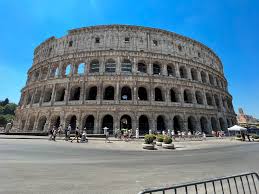
Colosseum
The Colosseum, also known as the Flavian Amphitheater, is one of the most iconic symbols of ancient Rome and a marvel of engineering and architecture. Located in the heart of Rome, Italy, the Colosseum was commissioned by Emperor Vespasian of the Flavian dynasty in 70-72 CE and completed by his son, Titus, in 80 CE. The amphitheater was used for gladiatorial contests, public spectacles, animal hunts, and other forms of entertainment, serving as a centerpiece of Roman culture and society.
The Colosseum is an architectural masterpiece, with its elliptical design and tiered seating that could accommodate up to 50,000 spectators. The structure is made of concrete and stone, with a complex system of vaults and arches that allowed it to withstand the weight of the massive crowds. The Colosseum’s exterior features three levels of arched entrances, adorned with columns in the Doric, Ionic, and Corinthian orders, reflecting the Roman appreciation for classical Greek architecture.
One of the most impressive features of the Colosseum is its underground complex, known as the hypogeum. This network of tunnels and chambers housed the gladiators, animals, and stage machinery used during the events. The hypogeum was equipped with elevators and trapdoors, allowing for dramatic entrances and surprises during the games. The floor of the arena could also be flooded to stage mock naval battles, showcasing the ingenuity and engineering prowess of the Romans.
The significance of the Colosseum extends beyond its architectural brilliance. It represents the grandeur and ambition of the Roman Empire, as well as the complex social and political dynamics of Roman society. The gladiatorial games and other spectacles held in the Colosseum were not only a form of entertainment but also a tool for the emperors to demonstrate their power and maintain control over the populace.
Despite suffering damage from earthquakes, fires, and neglect over the centuries, the Colosseum remains a symbol of Rome’s enduring legacy. It is a UNESCO World Heritage Site and attracts millions of visitors each year, who come to admire its grandeur and learn about the history of ancient Rome. Its inclusion as one of the Seven Wonders of the Modern World is a recognition of its historical and cultural significance, as well as its status as one of the greatest architectural achievements of the ancient world.
#### 7. **Taj Mahal, India**
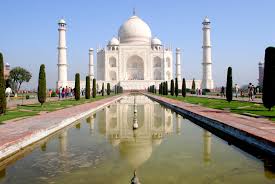
Taj Mahal
The Taj Mahal, located in Agra, India, is one of the most beautiful and iconic buildings in the world. Built by the Mughal Emperor Shah Jahan in memory of his beloved wife Mumtaz Mahal, the Taj Mahal is a symbol of eternal love and a masterpiece of Mughal architecture. Construction of the mausoleum began in 1632 and took over 20 years to complete, with the efforts of thousands of artisans, craftsmen, and laborers.
The Taj Mahal is renowned for its stunning white marble façade, which changes color depending on the time of day and the quality of light. The central dome, which rises to a height of 240 feet, is flanked by four smaller domes and four minarets, creating a perfect symmetry that is characteristic of Mughal architecture. The intricate inlay work, known as pietra dura, features semi-precious stones embedded in the marble, forming delicate floral patterns and calligraphy.
The significance of the Taj Mahal goes beyond its architectural beauty. It is a symbol of the enduring legacy of the Mughal Empire, which left an indelible mark on the culture, art, and architecture of India. The Taj Mahal also represents the fusion of different cultural influences, including Persian, Islamic, and Indian, which are reflected in its design and decoration. The gardens that surround the Taj Mahal are laid out in the charbagh style, a traditional Persian design that symbolizes paradise.
The Taj Mahal has been designated a UNESCO World Heritage Site and is one of the most visited tourist destinations in the world. Its inclusion as one of the Seven Wonders of the Modern World is a testament to its timeless beauty and the universal appeal of its story. The Taj Mahal continues to inspire awe and admiration in all who visit, standing as a symbol of love, loss, and the enduring power of human creativity.
The Seven Wonders of the Modern World are more than just architectural feats; they are symbols of human achievement, cultural heritage, and the shared history of humanity. Each of these wonders represents a different era, culture, and vision, yet they all share a common thread: the ability to inspire awe and admiration across generations. As we continue to marvel at these modern wonders, we are reminded of the limitless potential of human creativity and the enduring impact of our collective efforts on the world.
7 Wonders of Ancient
You can also visit 7 Wonders of Ancient World
